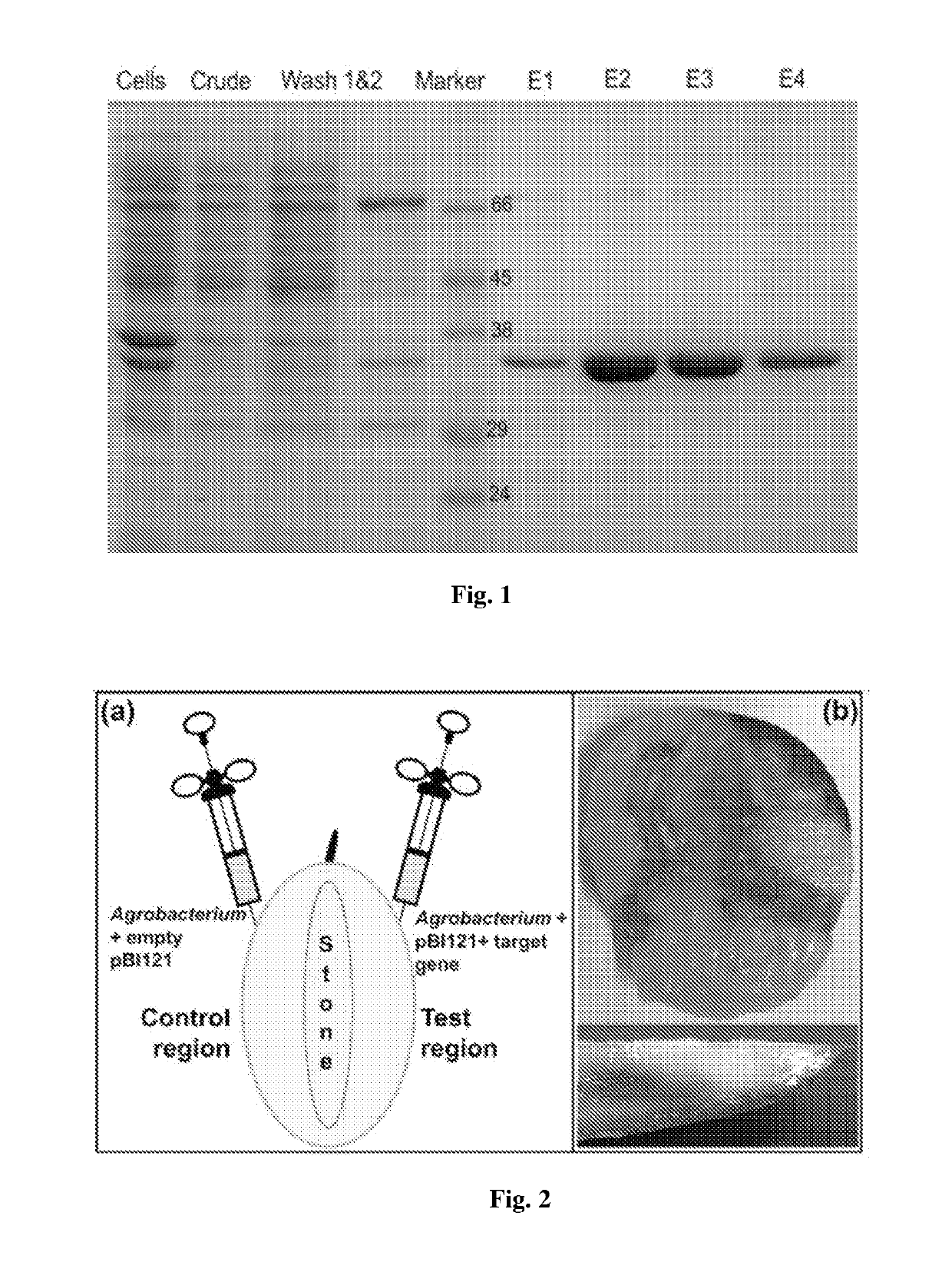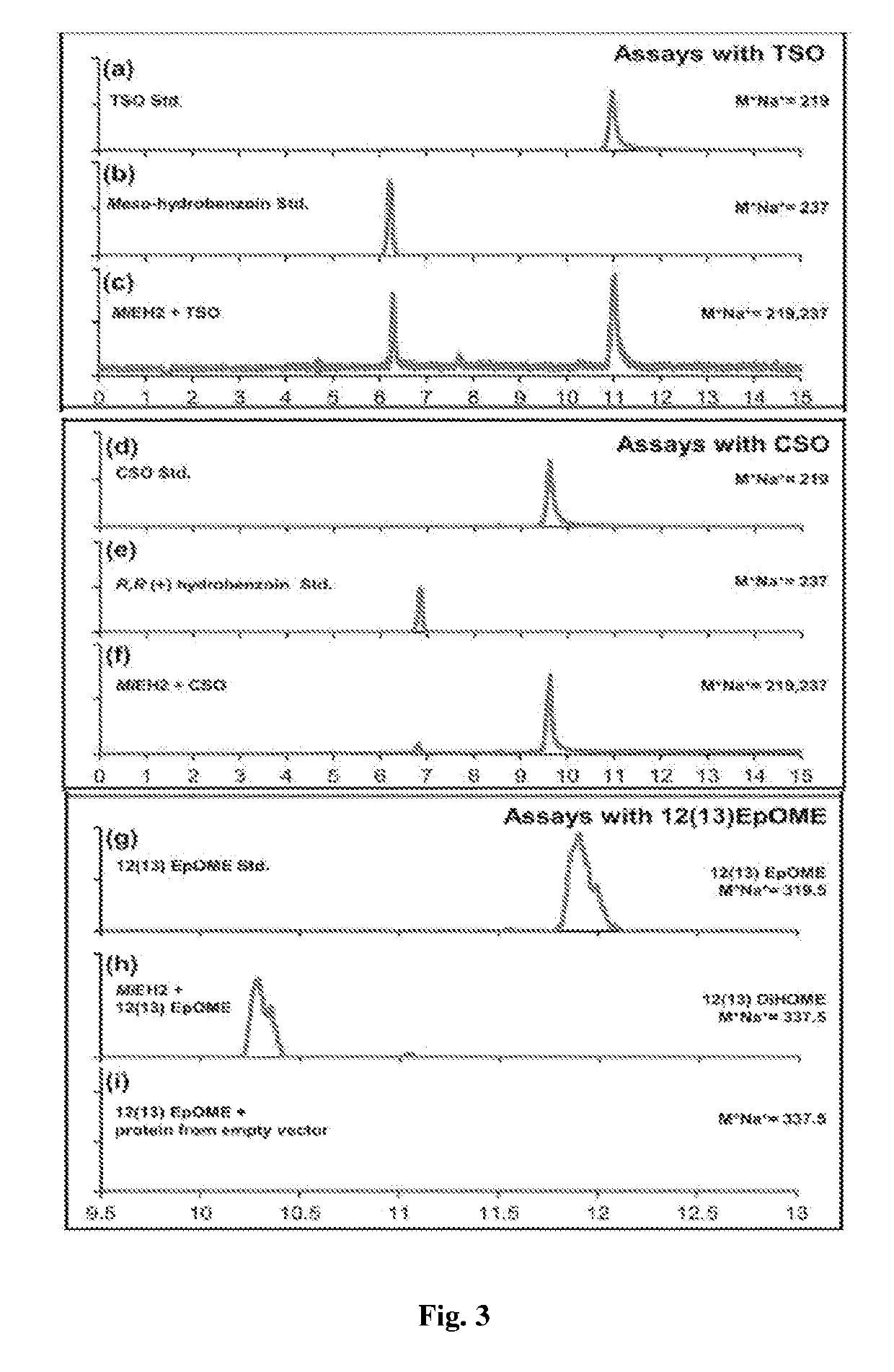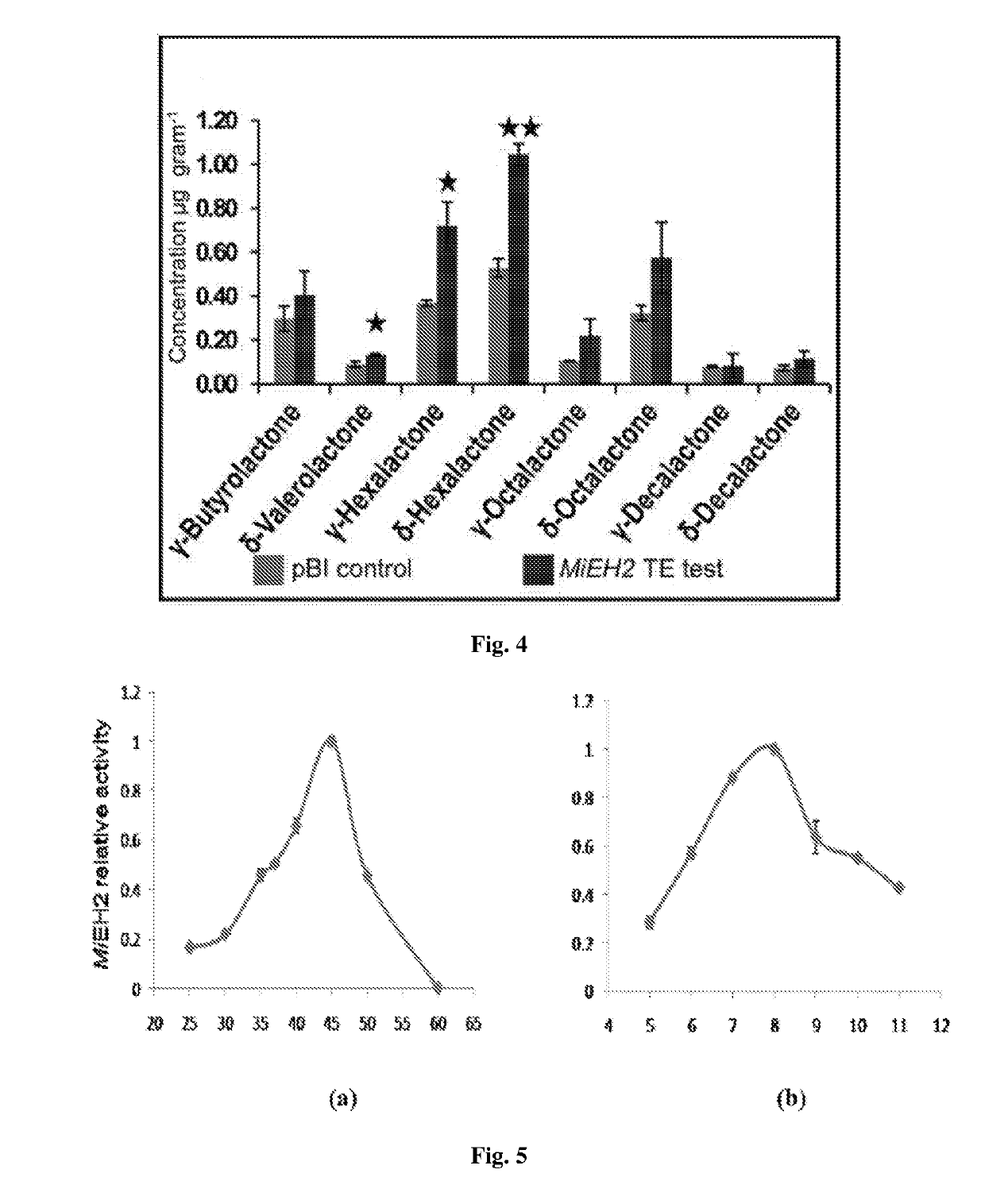Recombinant polynucleotide involved in lactone synthesis and process for synthesis of lactones thereof
a technology of recombinant polynucleotides and lactones, which is applied in the field of nucleotide sequence encoding, can solve the problems of inability to obtain increased lactone production in mangoes using enzymes, and achieve the effect of increasing lactone production
- Summary
- Abstract
- Description
- Claims
- Application Information
AI Technical Summary
Benefits of technology
Problems solved by technology
Method used
Image
Examples
example 1
rces
[0097]Plant material employed in the present invention was based on plant varieties. These varieties included cv. Alphonso and cv. Pairi which were collected from the Mango Research Sub Centre of Dr. Balasaheb Sawant Konkan Agricultural University, Dapoli, Deogad (Maharashtra, India, 16° 31′ N, 73° 20′ E). Fruits of cv. Kent were collected from the Regional Fruit Research Station, Dr. Balasaheb Sawant Konkan Agricultural University, Vengurle (Maharashtra, India, 15° 51′ N, 73° 39′ E). Four developing and four ripening stages of all three mango cultivars were collected. Developing stages were collected at 15 Days after Pollination (DAP), 30 DAP, 60 DAP and Mature raw stage (90DAP for cv. Alphonso and Pairi, 110DAP for cv. Kent). Fruits at these developing stages were harvested pulp(mesocarp) and skin(exocarp) were separated immediately. The tissues were snap frozen in liquid nitrogen and stored at −80° C. till further use.
example 2
ment of Mangoes
[0098]A set of 12 fruits each for all the three cultivars, i.e. Alphonso, Pairi and Kent were harvested at their respective mature raw stage and stored in the hay containing boxes at ambient temperature for ripening. Since the three cultivars showed variation in the ripening duration, tissue for ripening stages were collected at Table Green, Mid Ripe, Ripe and Over Ripe stage (each stage is represented by days after harvest for cv. Alphonso as 5, 10, 15 and 20 days; for cv. Pairi as 4, 6, 8 and 10 days and for cv. Kent as 5, 8, 10 and 13 days respectively) based on the skin colour, aroma and fruit softness. At each ripening stage, fruits for each cultivar were removed from the storage boxes, followed by pulp and skin separation. The pulp and skin removed were frozen in liquid nitrogen and stored at −80° C. till further use. For transient expression studies ethylene treated fruits were collected as described by Chidley et al. (2013).
example 3
tion and cDNA Synthesis
[0099]Total RNA isolation was carried out for all the tissues sampled for current study using RNeasy Plus mini kit (Quiagen, Venlo, Netherlands). Two microgram of total RNA was used to carry out reverse transcription for synthesis of cDNA using High Capacity cDNA reverse transcription kit (Applied Biosystem, CA, USA).
PUM
 Login to View More
Login to View More Abstract
Description
Claims
Application Information
 Login to View More
Login to View More - R&D
- Intellectual Property
- Life Sciences
- Materials
- Tech Scout
- Unparalleled Data Quality
- Higher Quality Content
- 60% Fewer Hallucinations
Browse by: Latest US Patents, China's latest patents, Technical Efficacy Thesaurus, Application Domain, Technology Topic, Popular Technical Reports.
© 2025 PatSnap. All rights reserved.Legal|Privacy policy|Modern Slavery Act Transparency Statement|Sitemap|About US| Contact US: help@patsnap.com



